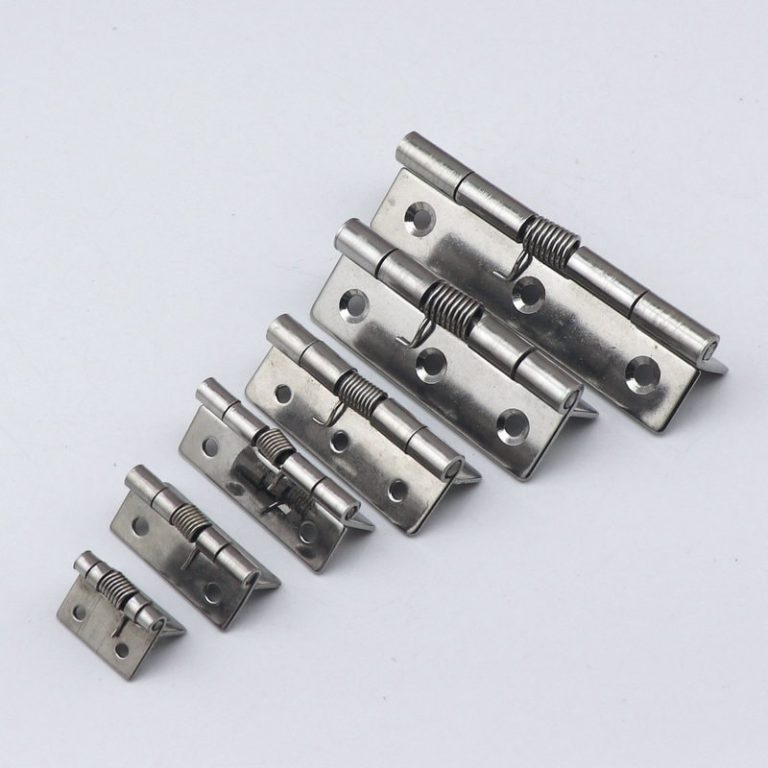Serrated nut – serrated flange – hex nuts with flange _ serrated flange nuts
Serrated nut is a kind of lock nut with ridges on the surface of the nut, which can snap into the tightened surface. The splines are angled to prevent the nut from turning in the direction in which the nut loosens.
Due to the grooves, they cannot be used with gaskets or on non-scratched surfaces. Sometimes there are serrations on both sides of the nut so that both sides can be locked.
Hex nut with integrated serrated washer, The hexagon flange nut is a type of hex nut with a wide flange near one end, which is used as an integrated non-rotating washer.
The serrated nuts are used to distribute the load applied to the nuts over a wider surface area to prevent damage to the installation material. The flange acts as a gasket, enabling the nut to be evenly fixed on the surface of the mounting material.
Flange hexagon nuts are very common and are widely used for softer installation materials. These nuts have serrated flanges.
These serrated nuts are knurled on the bottom of the flange to create a locking effect. The spline bites into the installed material, so over time, the nut is unlikely to loosen due to vibration. Hexagon serrated nut also eliminates the need to add washers to each fastener assembly during installation, saving time and money.


Serrated nut instead of nut + washer?
However, you may need to ask a specific machine designer to get an answer. Speculative; note that the function of serrated nut is different from that of nuts and washers.
The flange of the Serrated nut will rotate with the nut, but the gasket usually does not. The washer can help control the wear of the mating surface due to its resistance to rotation.
In fact, washers can protect a surface better than the serrated nut. If a lock washer is also used on the washer, this can be significant.
Another thing to consider is that for a given screw size, you can buy washers of different thicknesses and outer diameters. This allows the placement of gaskets with the required mechanical resistance.
You can even get hardened washers. Choosing the right gasket can help control wear and provide better support for the joint. Another potential problem is torque requirements.
Nuts and washers provide a consistent surface, friction will occur, so the bolt can be tightened correctly with a given torque.
Flange washers will require different torques, depending on the flange. Reliable material. If the flange has anti-rotation properties, you only need to add another variable to the mix.
It is true that nothing in RepRap requires the high precision of bolt tension, but the point remains. By the way, you can easily use a serrated nut with washers.
This is very useful if you need to open a big hole. For this use case, I just don’t see any advantages of serrated nut.
What is a serrated nut?
The serrated nut is a hexagonal nut with a spline rotating washer at the bottom. This type of flange nut is used to help prevent loosening when there is vibration.
How does the flange nut work?
The built-in washer of the flange nut works in the same way as the standard washer, providing a larger area to distribute the nut. Apply pressure to the fixed part. If the flange has splines, these splines will bite into the mounting material, and over time, the nut is unlikely to loosen due to vibration.
How to tighten the locking flange nut?
As with any other hex nut, you can tighten the lock flange nut with a suitable wrench or ratchet after screwing the lock flange nut into the end of the bolt to be installed.
How to measure serrated nut?
Serrated nuts are measured according to their internal threads and displayed as diameter-thread pitches. To find a bolt that matches the nut, and vice versa, this thread size must match. For example, 1/4” serrated nut can only be connected to 1/4” bolts or threads.
What is a hexagon flange nut?
The hexagonal flange nut is a kind of hexagonal nut with a wide flange portion near one end, which is used as a non-rotating built-in washer.
Serrated nuts are used to distribute the load applied to the nuts over a wider surface area to prevent damage to the installation material. They can be in a jagged or non-serrated style.
What does a serrated nut look like?
The flange nut looks like a standard hex nut, but the bottom is flared, similar to a washer integrated with the nut. This gives the flange nut a slight bell shape.

